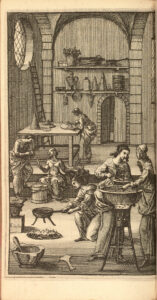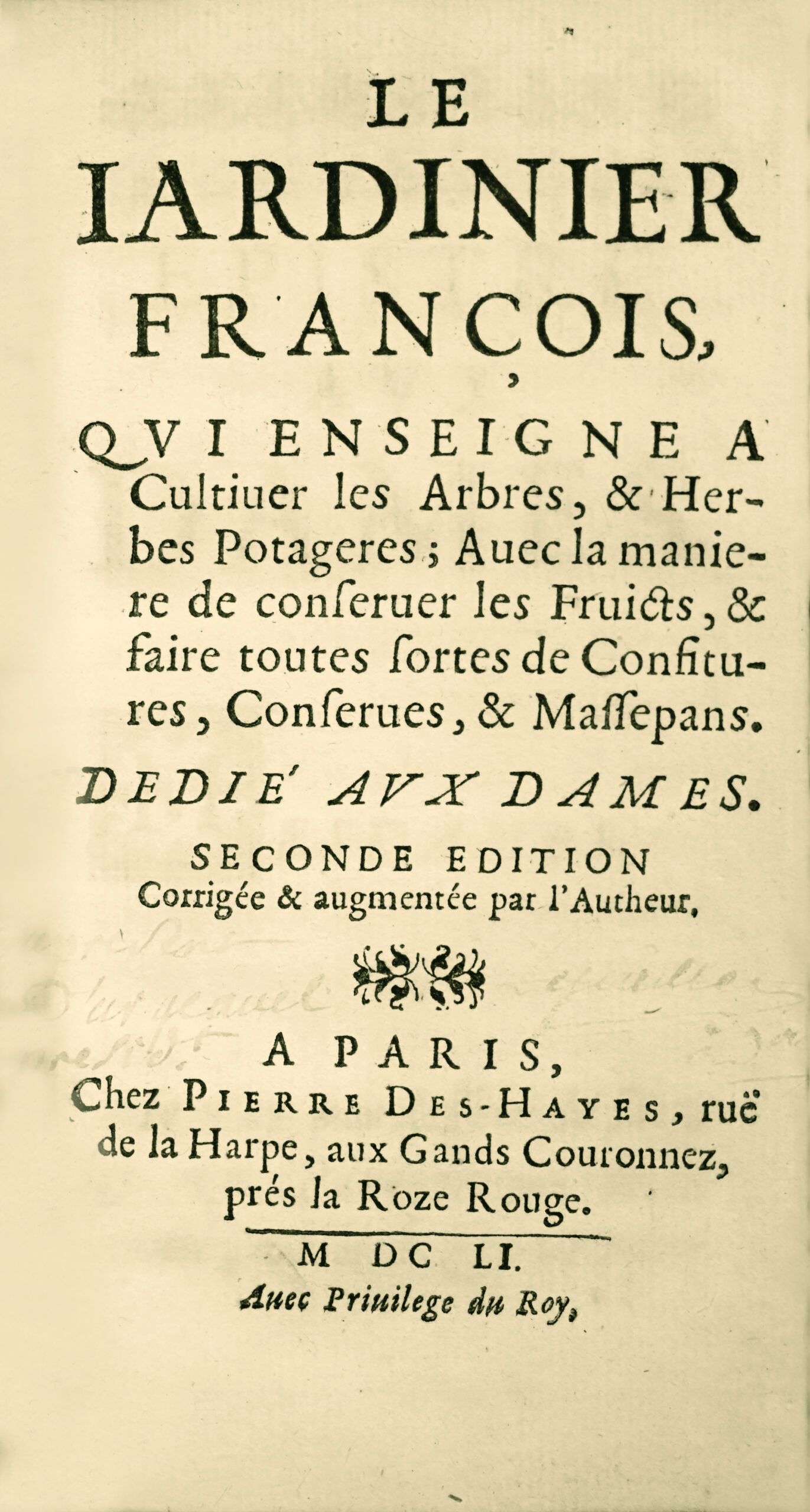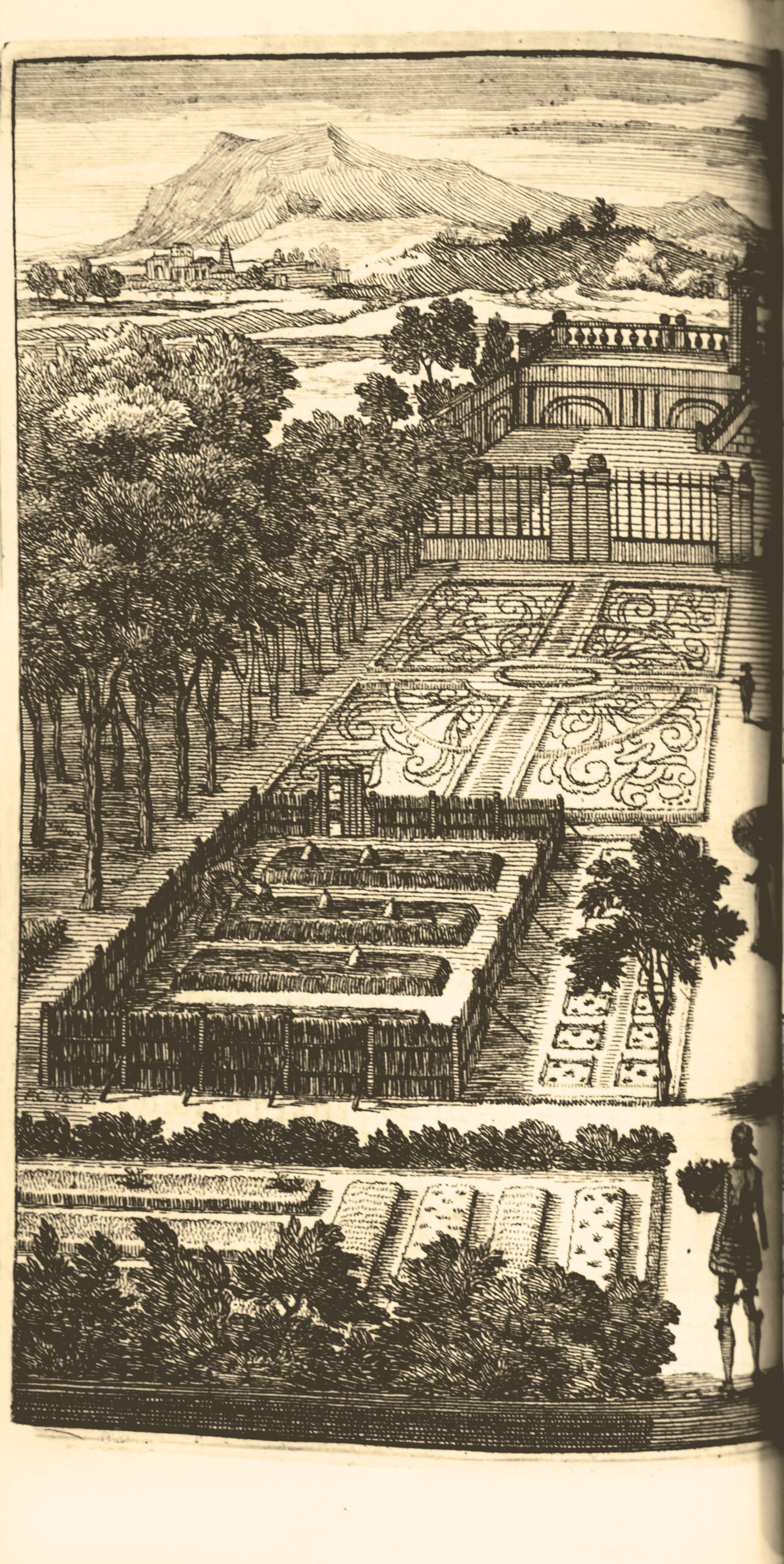Paris, Pierre Deshayes, 1651.
In-12 of 1 frontispiece, (24) pages, 380 pages, (2), 3 full-page plates outside the text. Red morocco, gold decoration on the boards in a variation of the Duseuil frame, spine with raised bands and flower motifs, double gilt fillet on the edges, gilt inner roulettes, gilt edges on marbling. Trautz-Bauzonnet.
135 x 75 mm.
Second edition original expanded from the first published in the same year 1651. It is so rare that Vicaire does not know it.“A character both introduced to the court, where he holds the title of valet de chambre to the King, and a rural landowner dealing in trees and seeds, Nicolas de Bonnefons is one of the main figures of the gardening and vegetable-growing vogue that swept French society during the 17th century. His French Gardener was a great success right from its original edition in 1651 and was reissued continuously without significant changes until 1737. While the first two parts of the book deal respectively with fruit tree cultivation and vegetable garden management, the third and last part consists of a treatise on preserves. Its main originality compared to other 17th th century preserve manuals lies in the emphasis on preserving fruits without special preparation: the book opens with a long discourse on domestic economy explaining how to construct a fruit storage and the various ways to store fruits in their natural state, according to their varieties, after which comes a chapter dedicated to fruits naturally dried, without turning them into paste. The remainder of the treatise belongs more properly to the art of confectionery, offering both preserve recipes and sugar paste recipes to counterfeit various figures of food and fruit – an art of illusion that greatly contributed to the prestige of collations or the final fruit course in feasts.” (Jean-Marc Chatelain).
“Engraved frontispiece, the 13 preliminary leaves are occupied by the title, “epistle to the ladies ” signed: RDCDWBDN and dated Paris, on the 1er st of July 1651, the “preface to the reader”, and the table.
The initials are, in reverse, those of the first name, surname, and quality of the author, Nicolas de Bonnefons, valet de chambre to the King.
The French Gardener is adorned, in addition to the frontispiece, with three figures, engraved by Chauveau, placed at the head of each of the three treatises that compose it. The first, representing a vegetable garden in which gardeners are working and a lord and a lady are strolling, is found before page 1; the second representing a garden, before page 117; and the third showing a kitchen interior, before page 245.
The first treatise occupies pages 1-116; the second, pages 117-244, and the third pages 244 to 380. This last one relates to fruits, their preservation, dry and liquid preserves, as well as ‘marzipan’ and macaroons.
The privilege is printed on the last leaf (recto and verso); it is dated “12th th day of June 1651” and completed printing on the “first day of July” of the same year.
It must be believed that the success of the French Gardener was great, for, first published in 1651, it was already, two years later, at its fourth edition, as can be seen on the title of the next edition.” (Vicaire).
One of the emblematic works of the culinary taste evolution in France in the mid-17thth century. The agronomist Nicolas de Bonnefons is “one of the main representatives of the gardening and vegetable growing vogue that captured French society during the 17th th century” (Jean-Marc Chatelain, in Books on the Table, Paris, BnF, Hermann, 2001, p. 147). However, it was among agronomists that the most decisive transformations occurred in French cuisine at the beginning of the reign of Louis XV, towards an “unprecedented promotion of the notion of natural flavor, achieved by better exploiting garden and orchard resources” (op. cit., p. 120). His work thus addresses these two aspects closely: the first two parts are devoted to fruit tree cultivation and vegetable garden management, while “the third and last part consists of a treatise on preserves. Its main originality compared to other 17th th century preserve manuals lies in the emphasis on preserving fruits without special preparation [… This third part] belongs more properly to the art of confectionery, offering both preserve recipes and sugar paste recipes to counterfeit various figures of food and fruit – an art of illusion that greatly contributed to the prestige of collations or the final fruit course in feasts.” (op. cit., No. 120, for the original edition).This edition is adorned with 4 pretty figures engraved in intaglio signed by François Chauveau, one of which is placed in the frontispiece.Very beautiful copy in morocco signed by Trautz-Bauzonnet.
Provenance: From the libraries of Huth ; Alfred Henry Huth ; James Toovey; the diplomat Michel Pierre Antoine Laurent Agar, Count of Mosbourg (ex-libris vignette on the back of the first free guard); then Morgand Bulletin 32 No. 23436.





